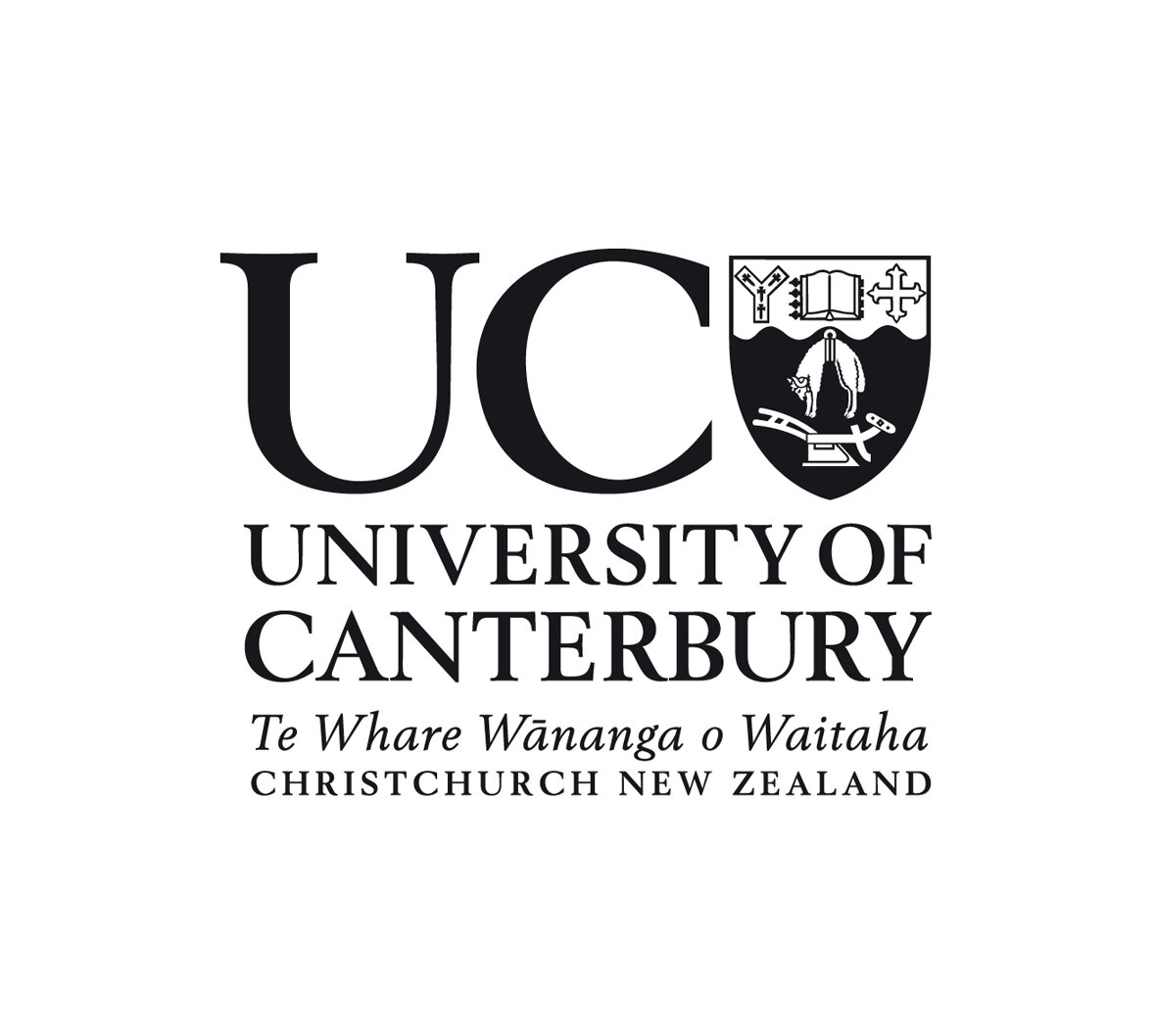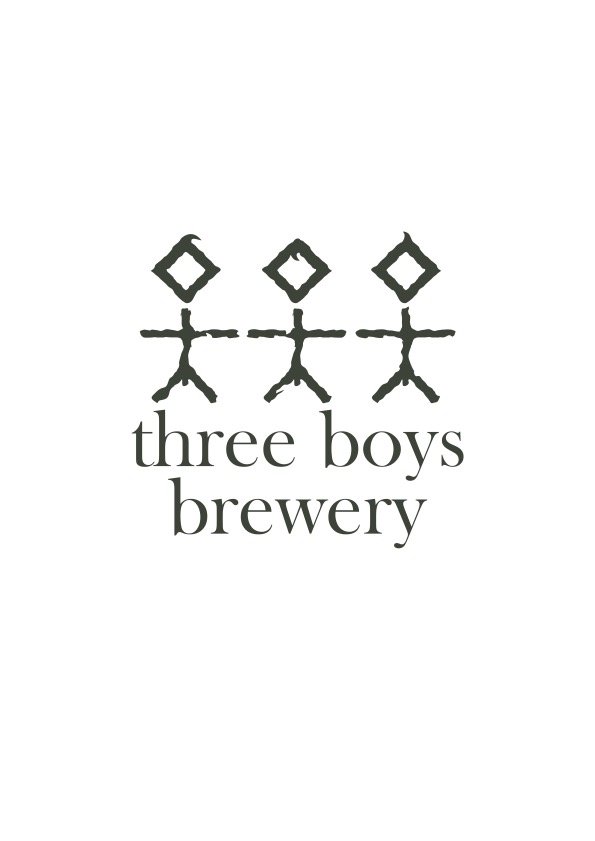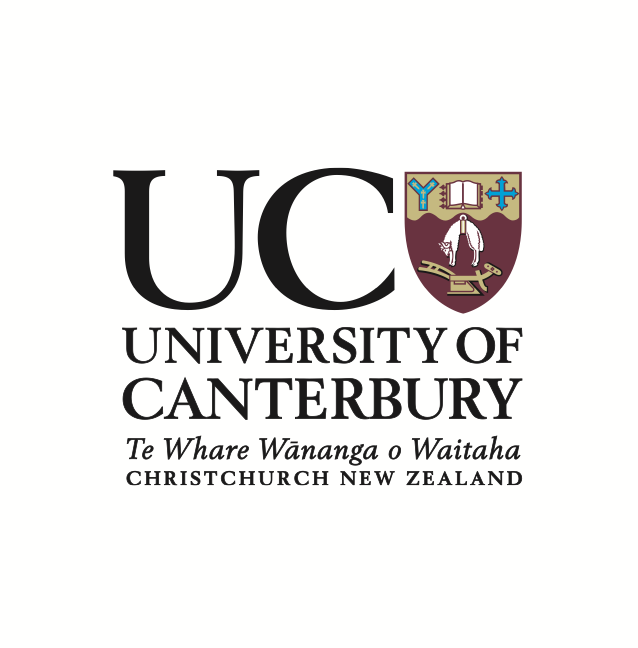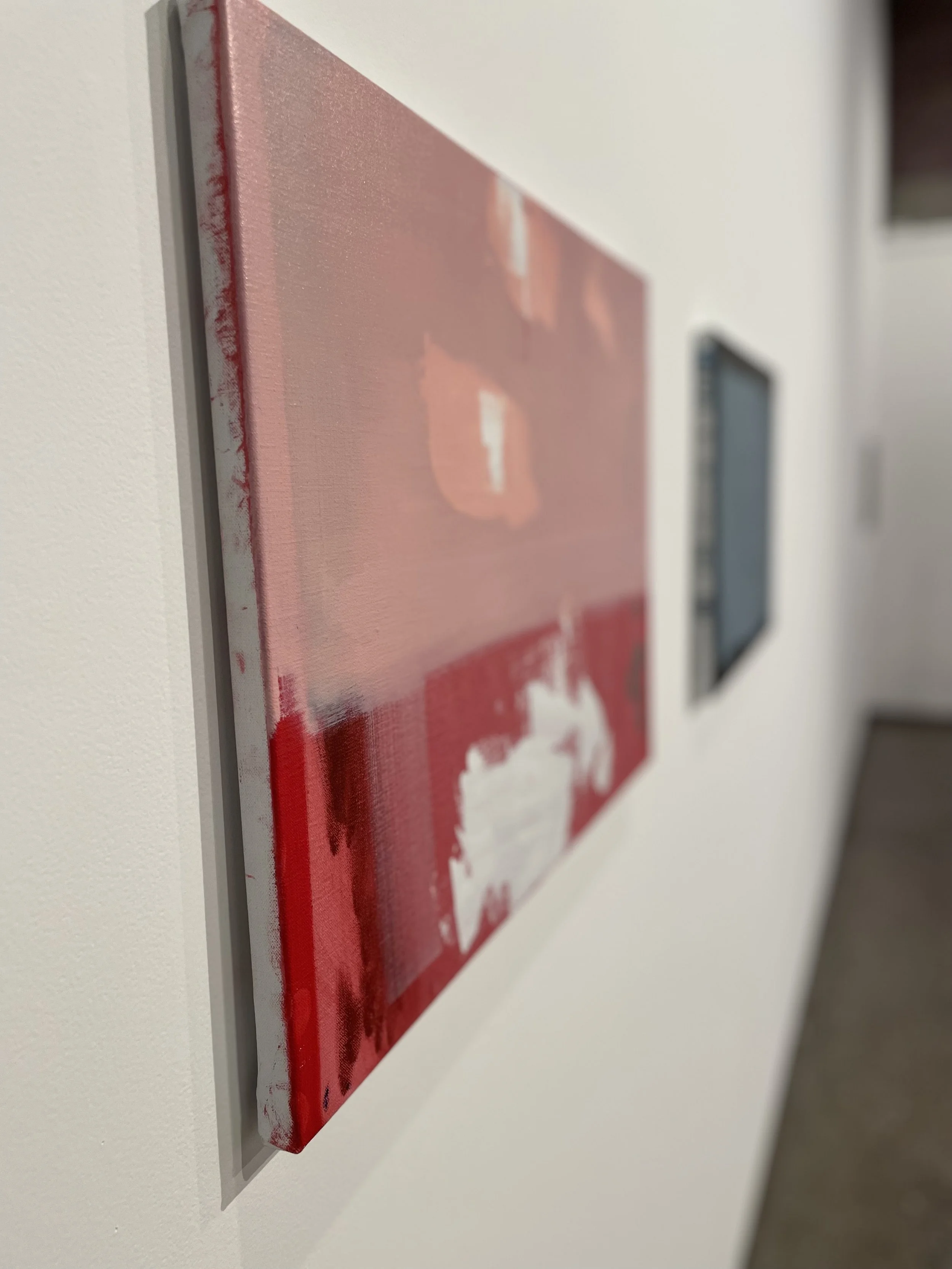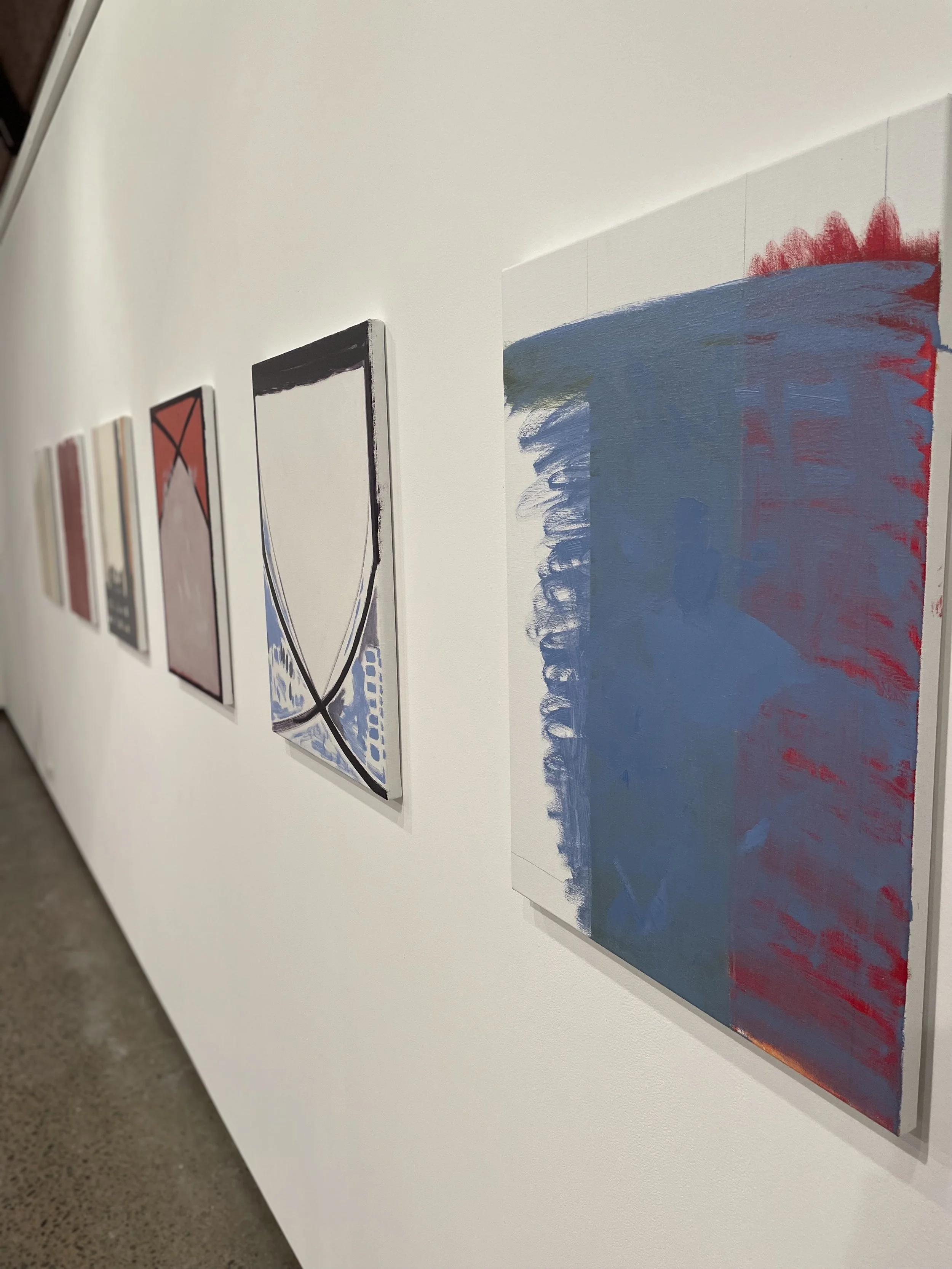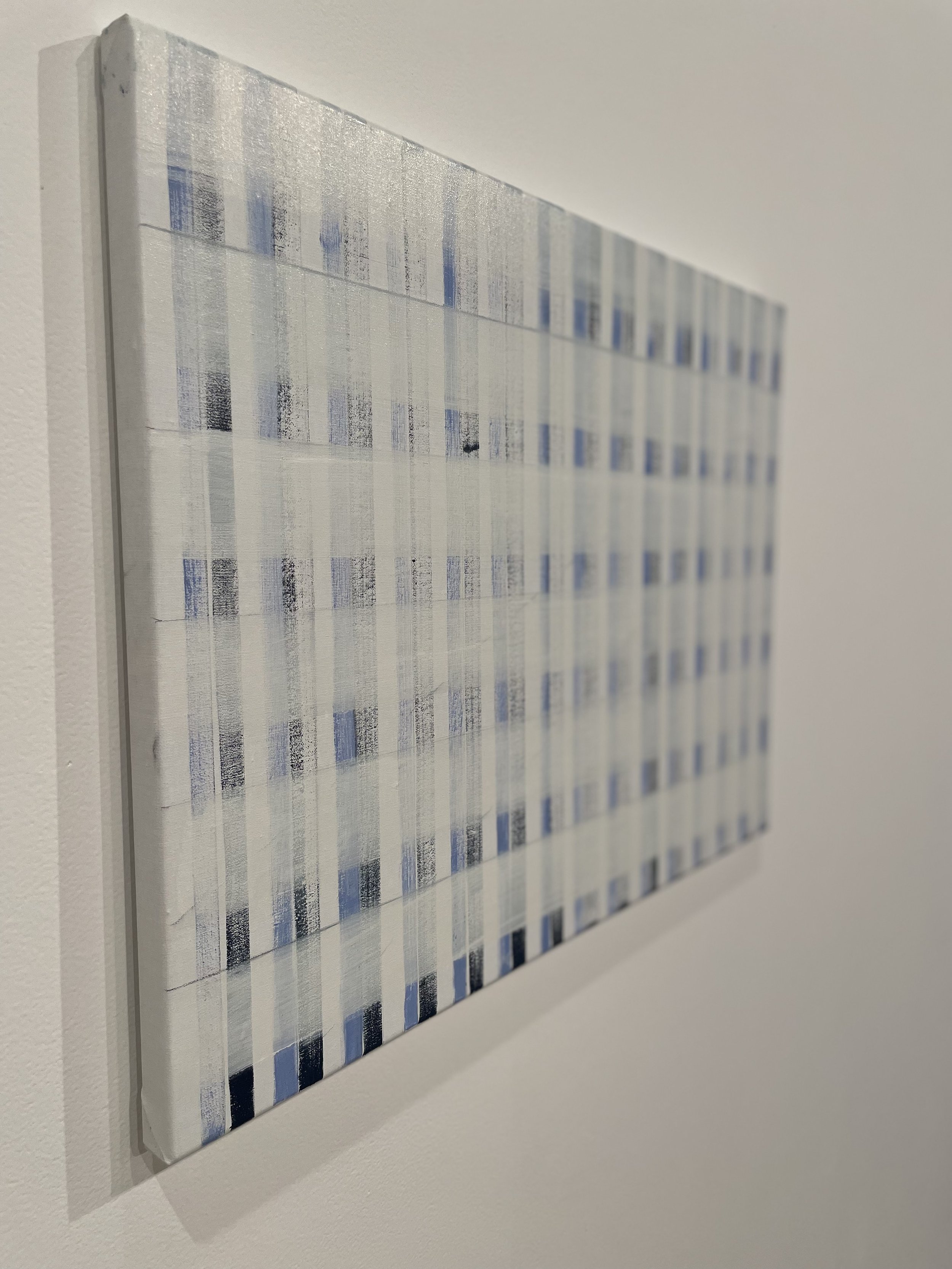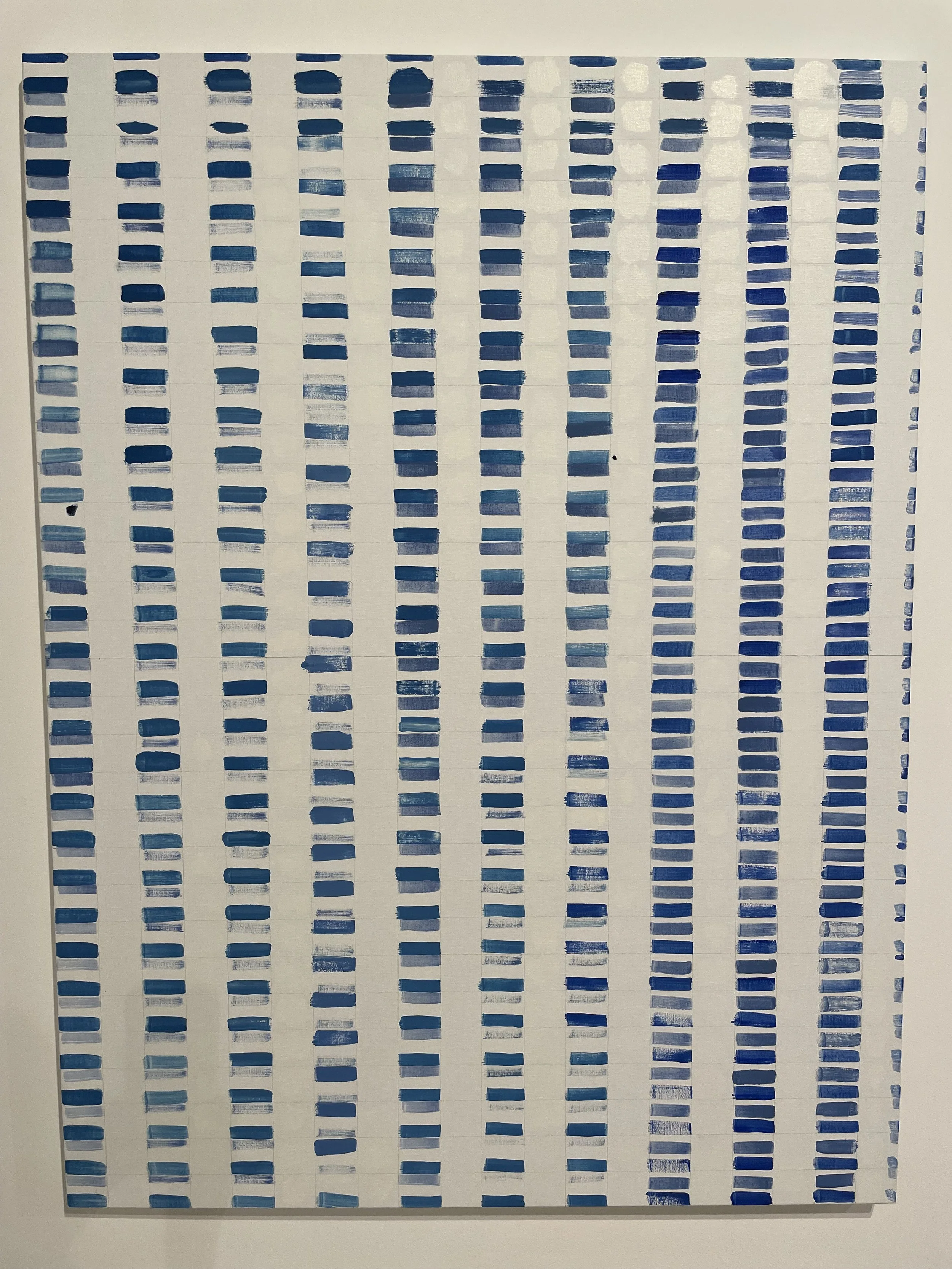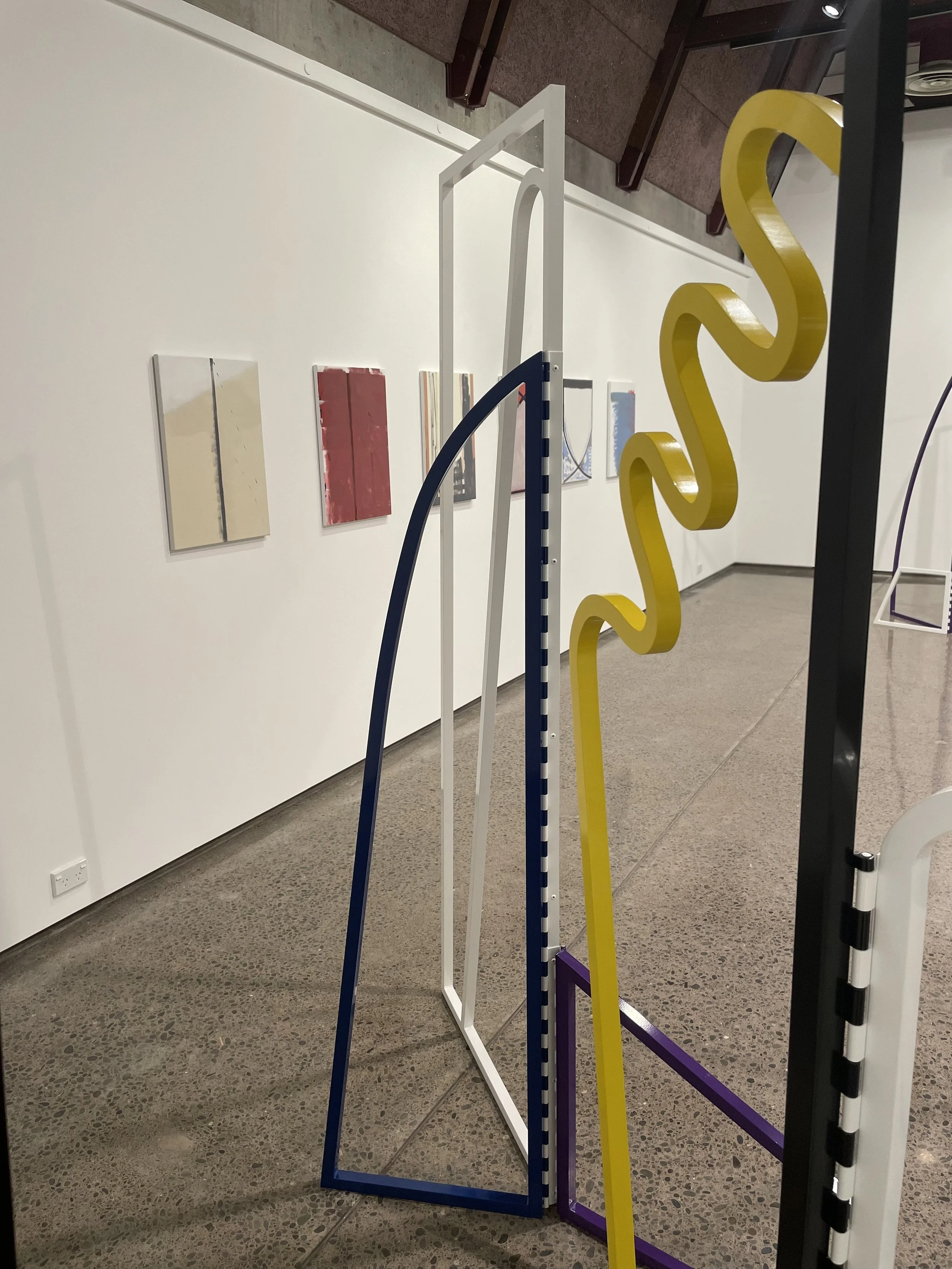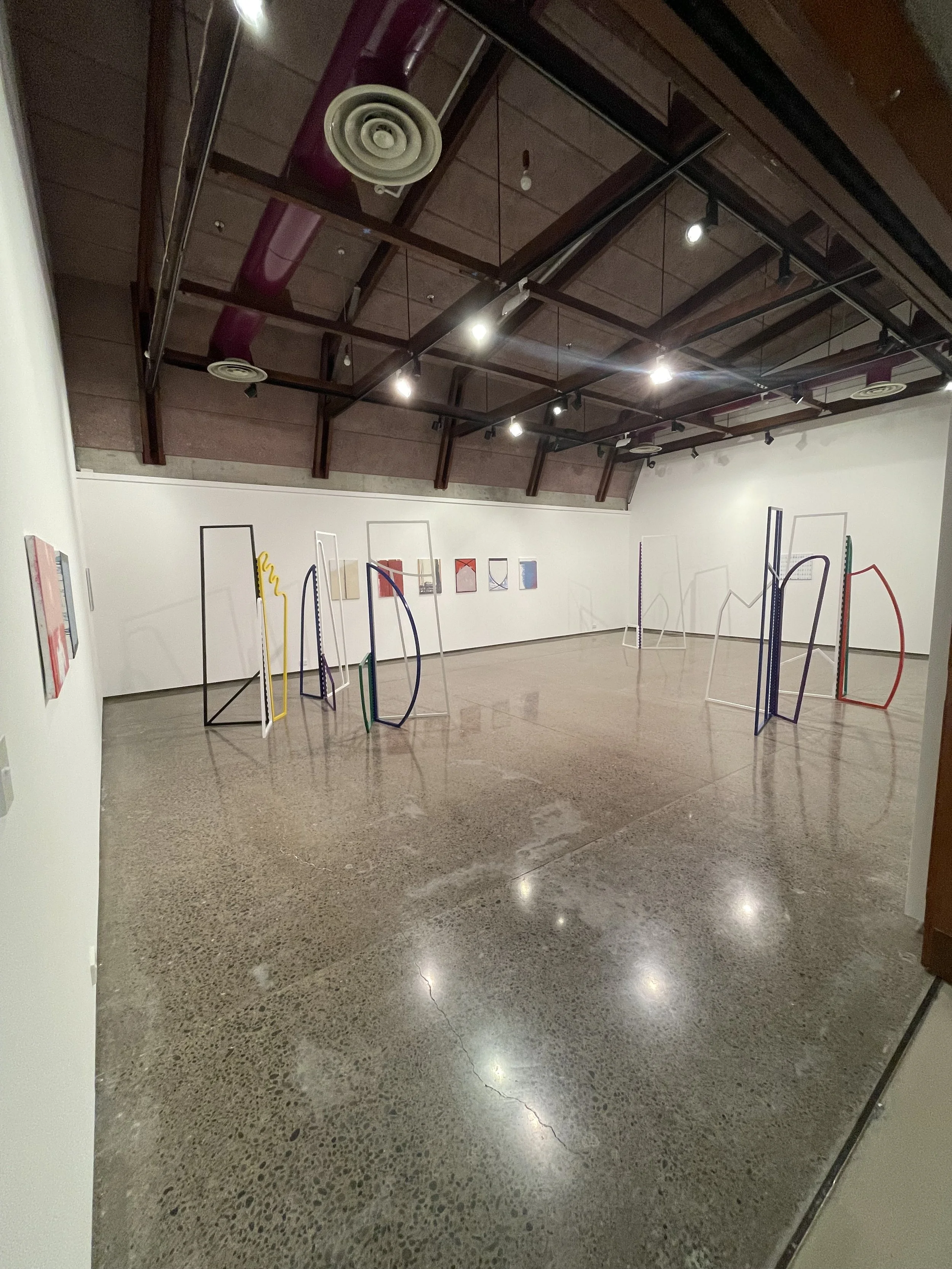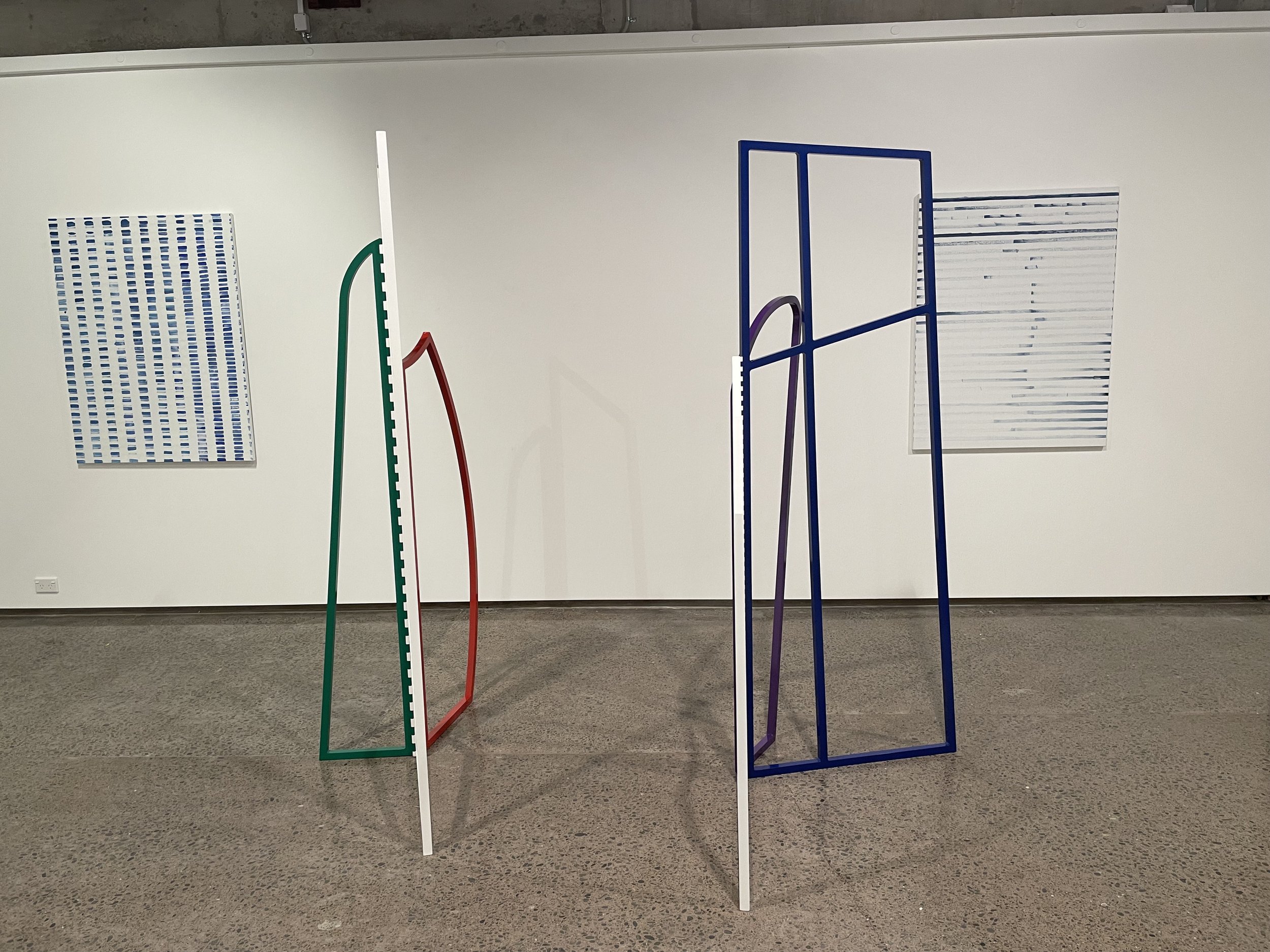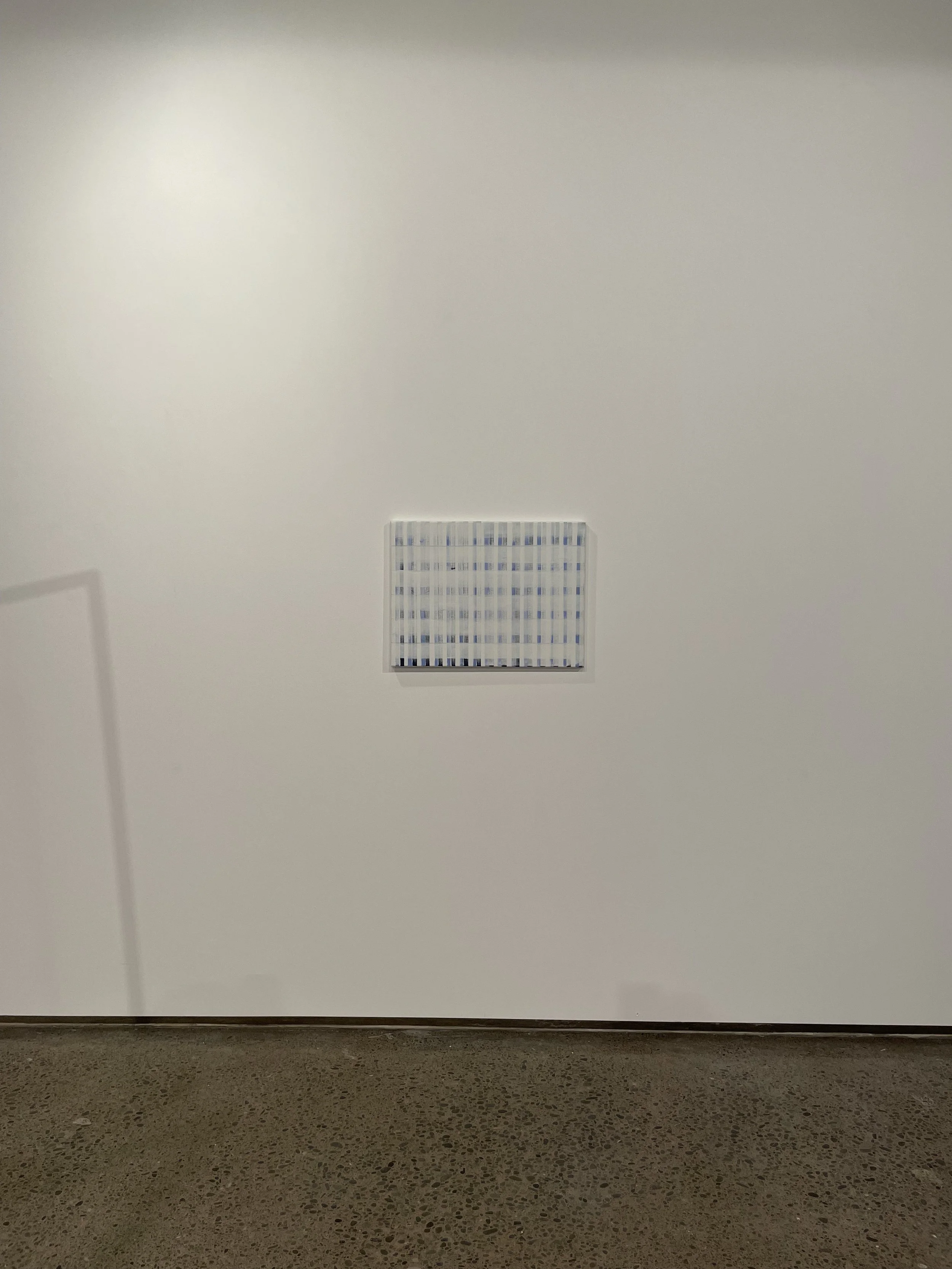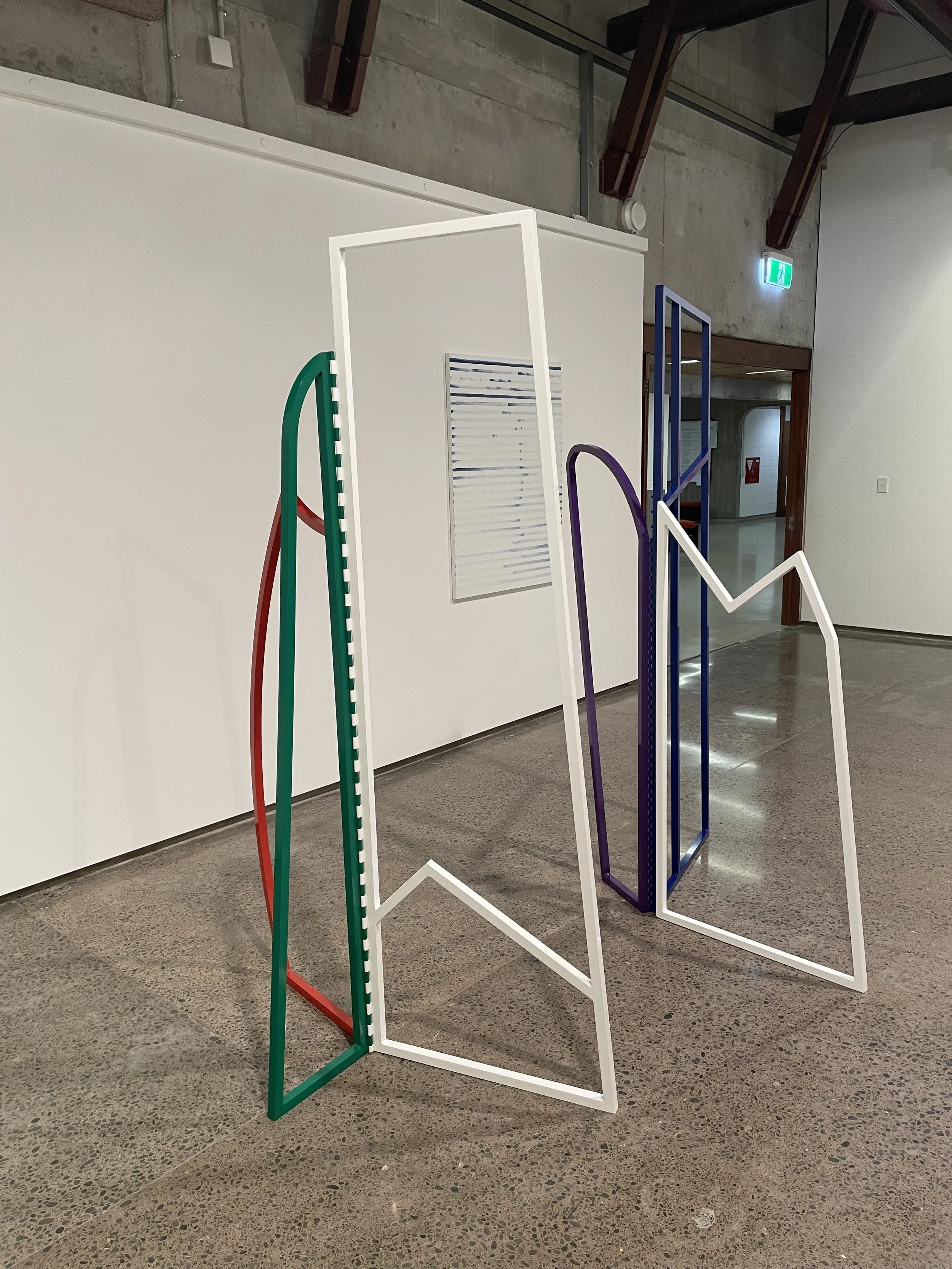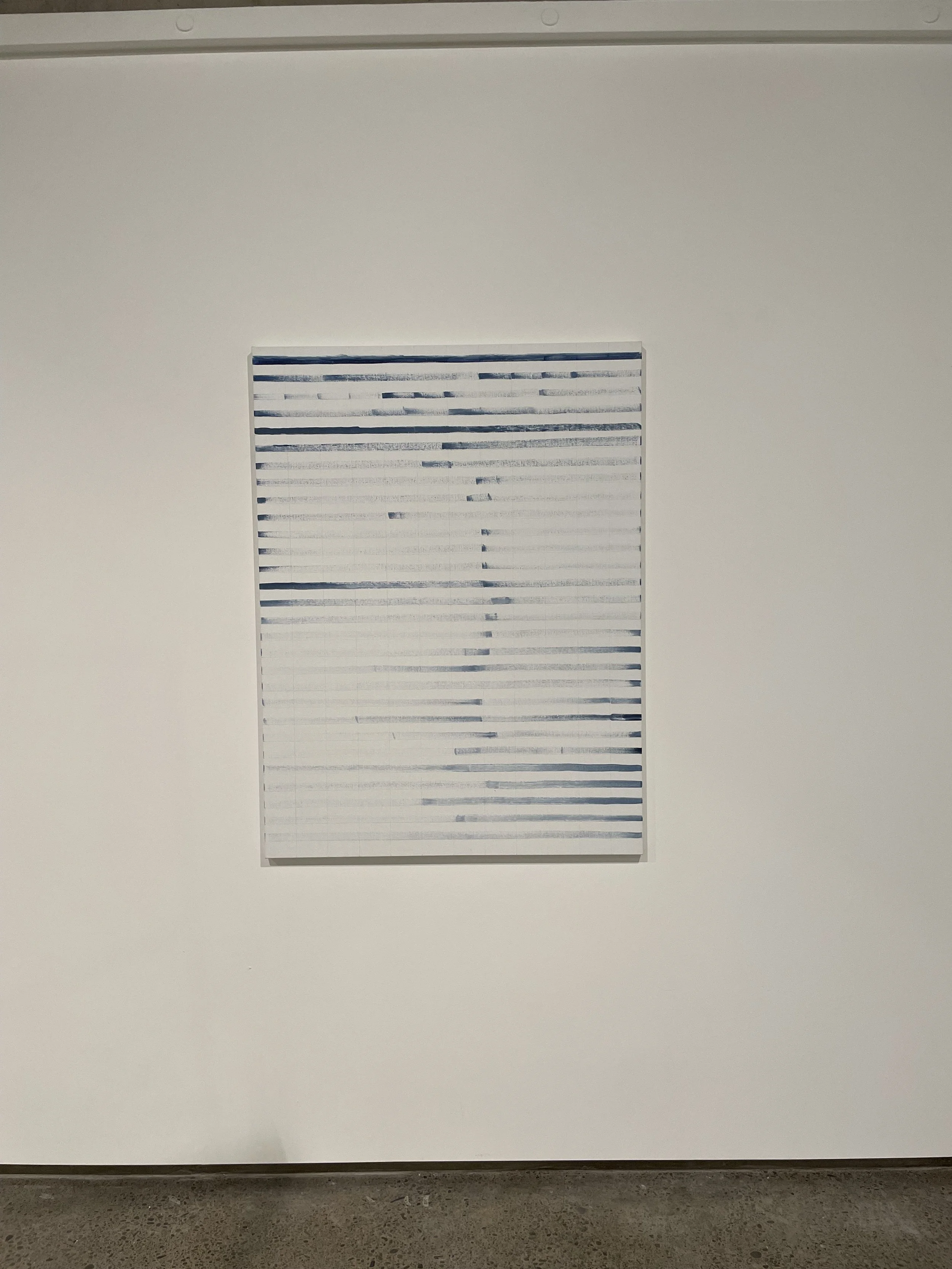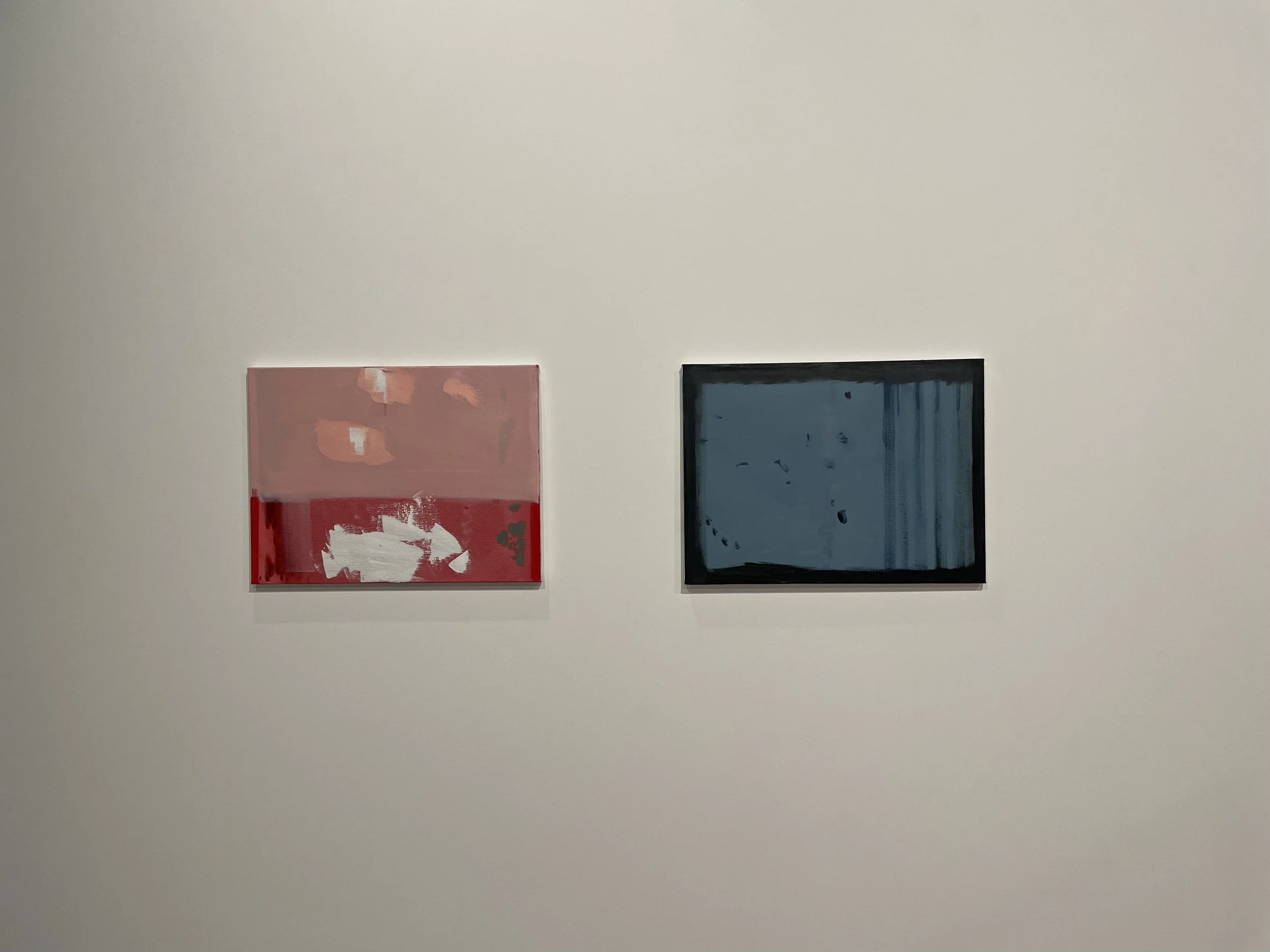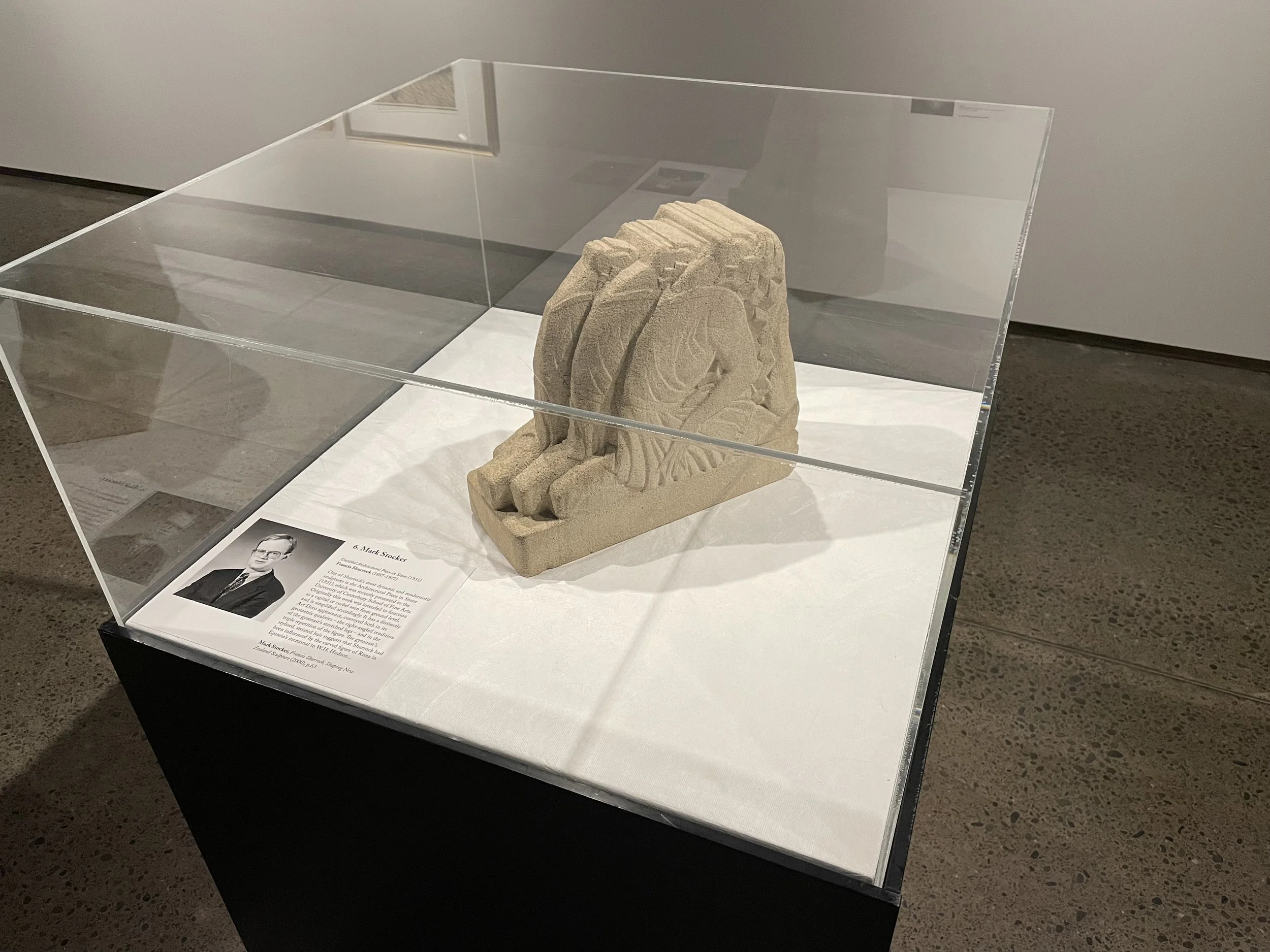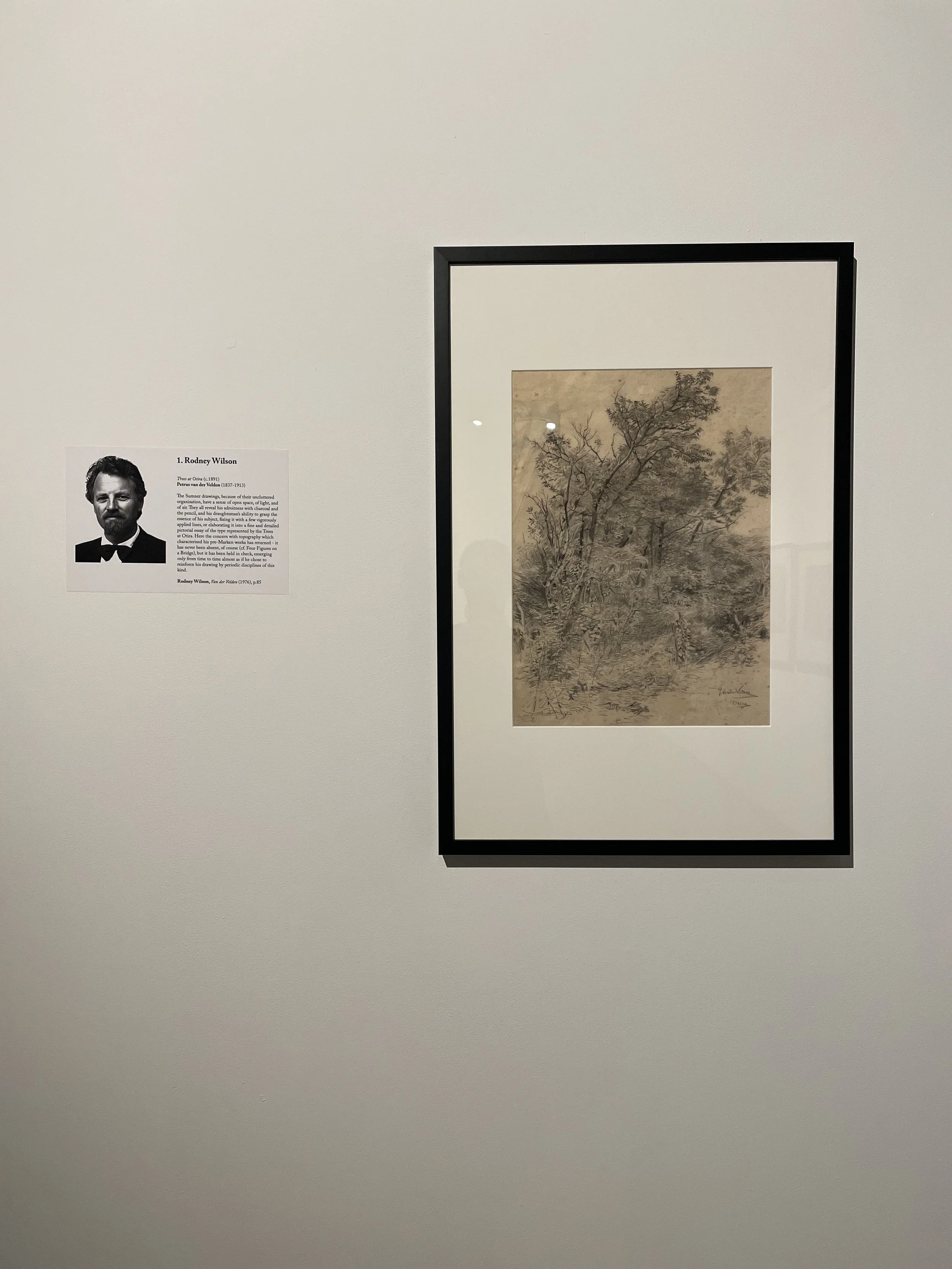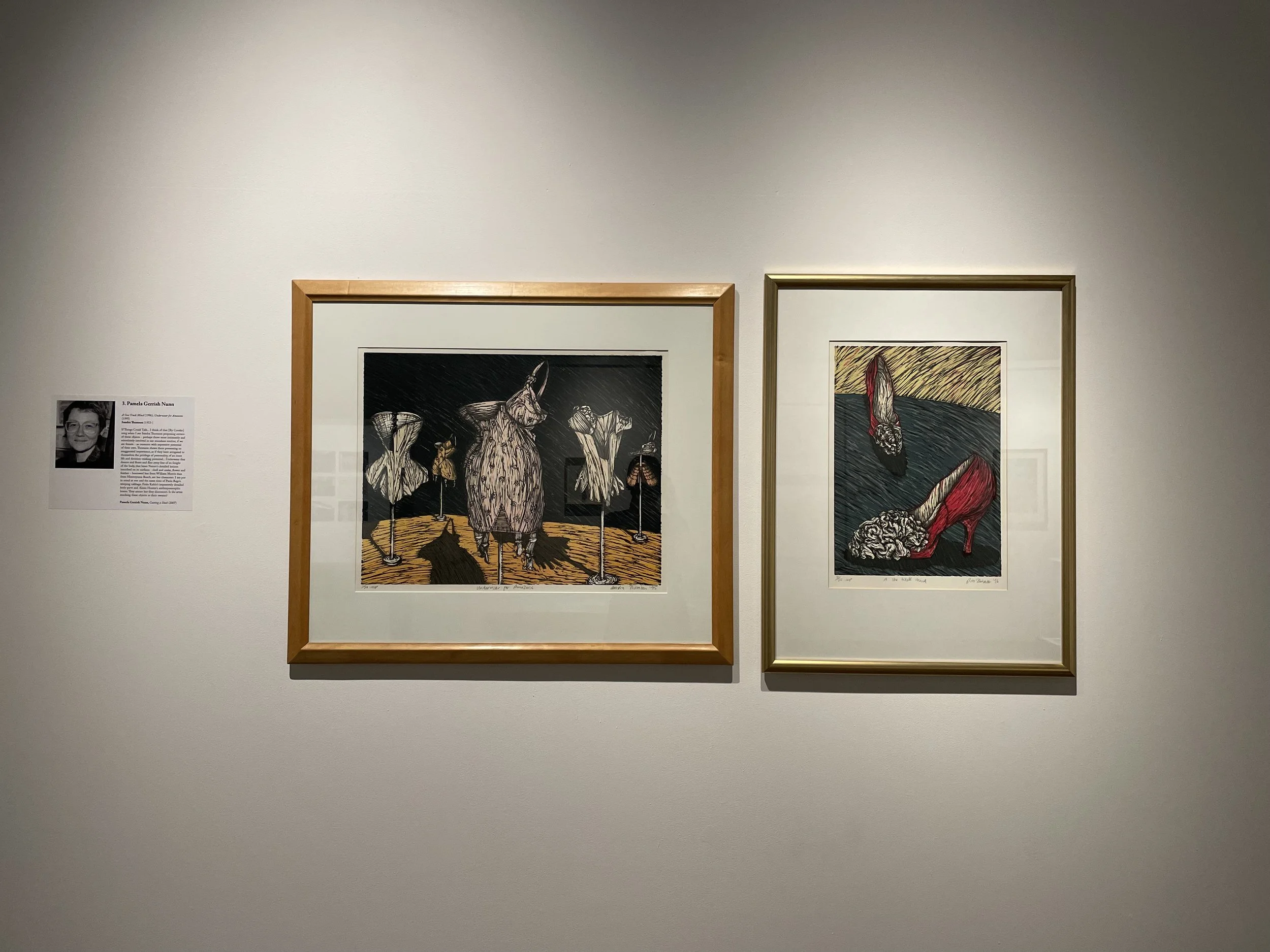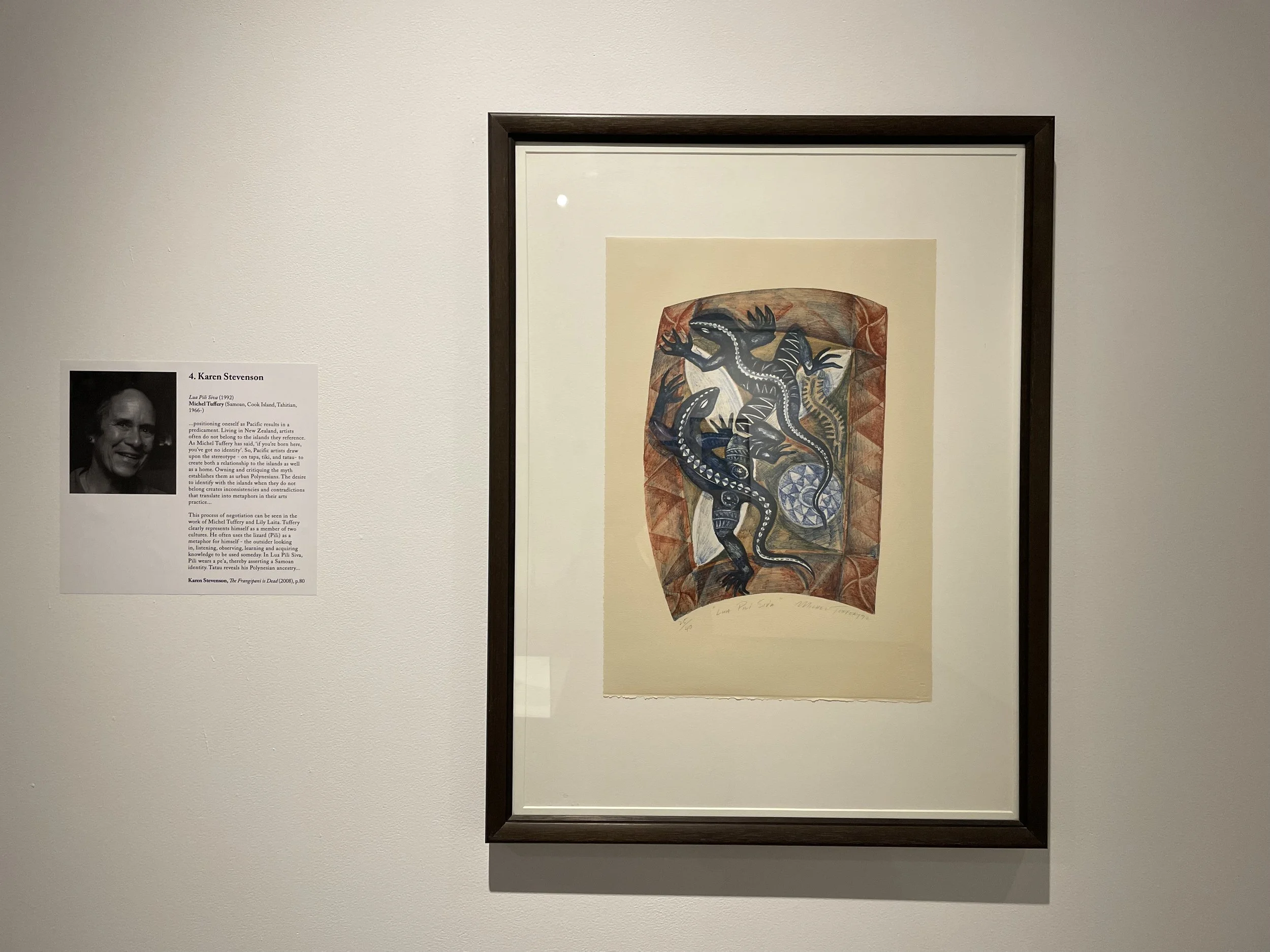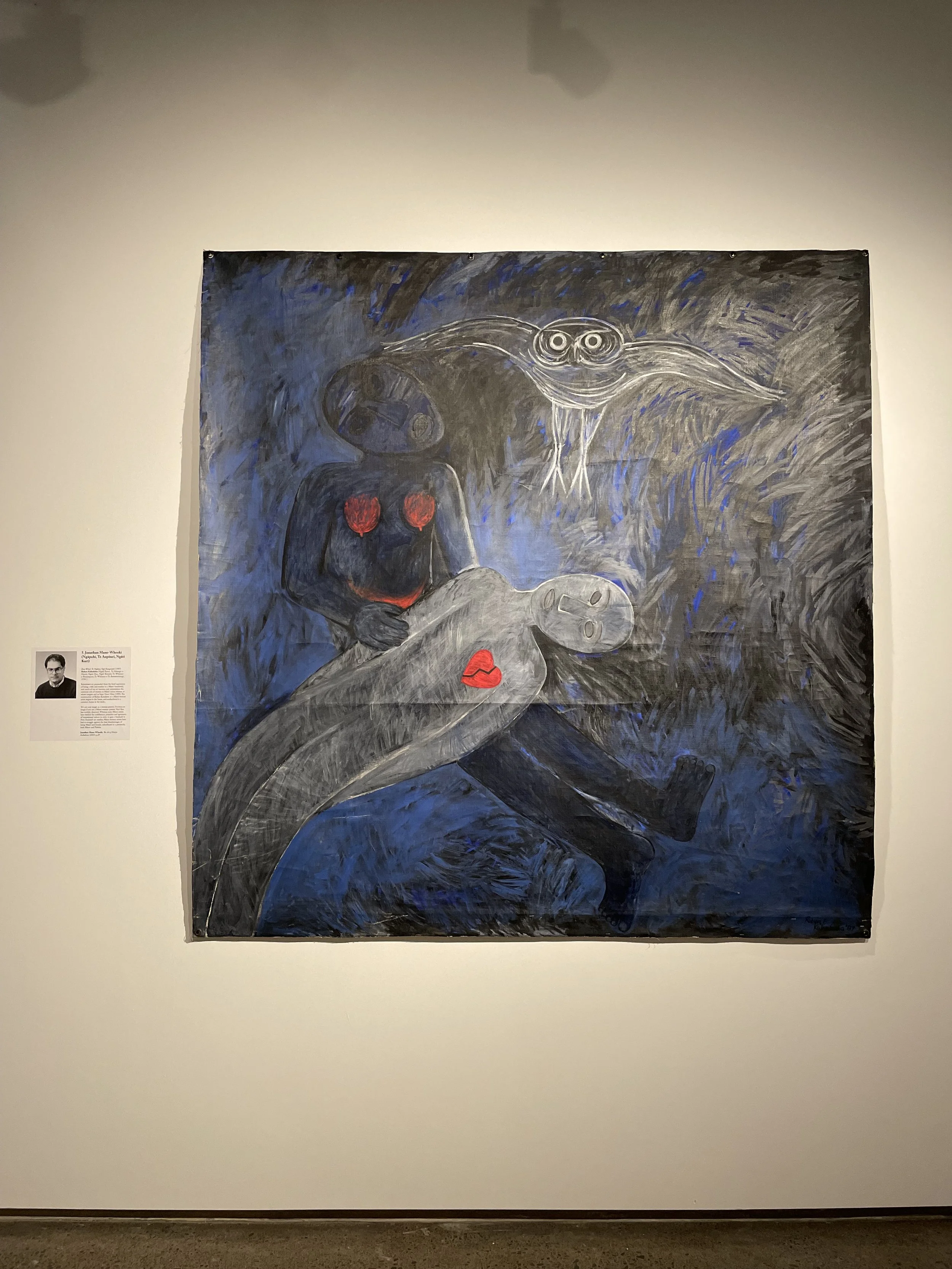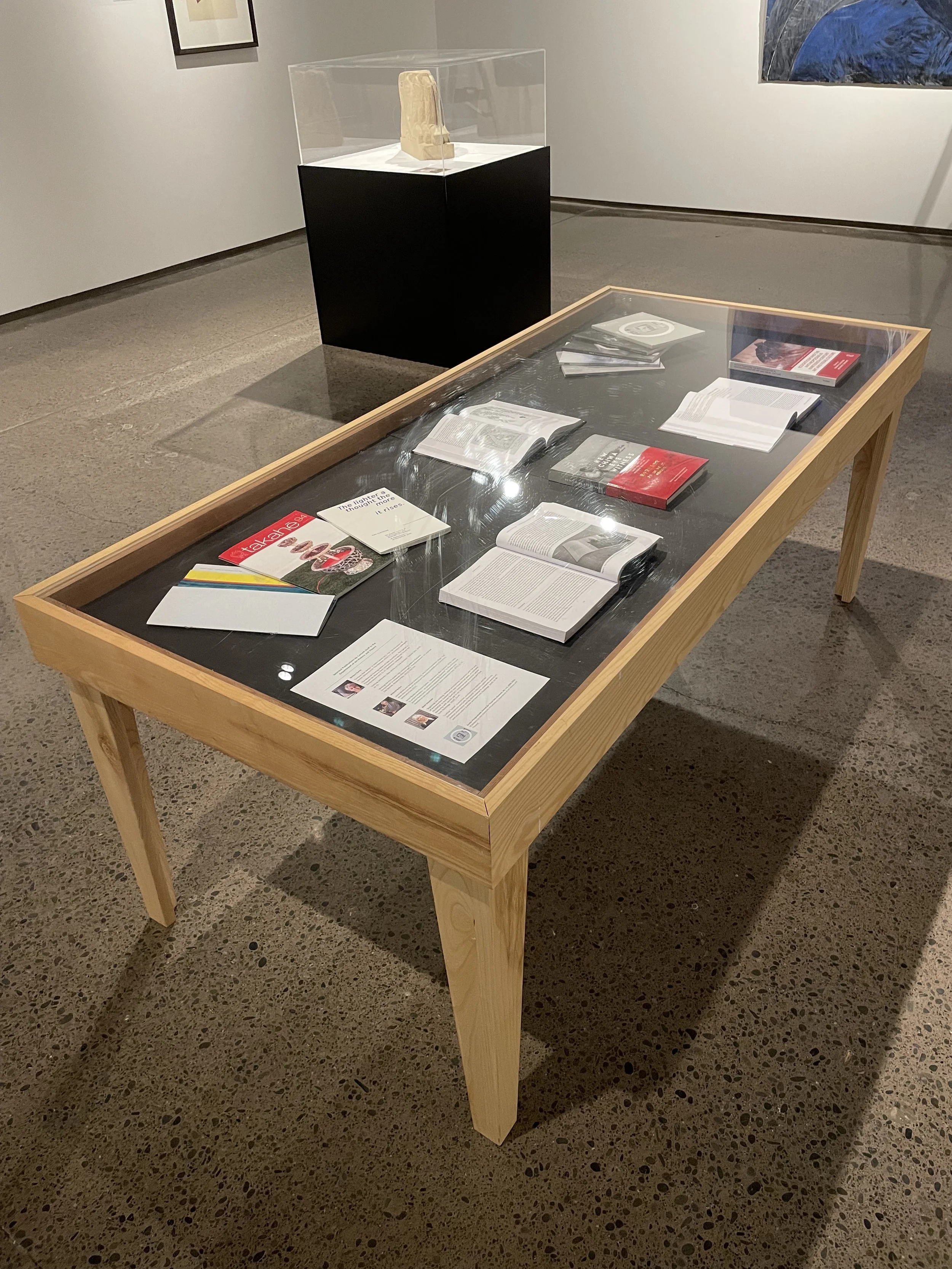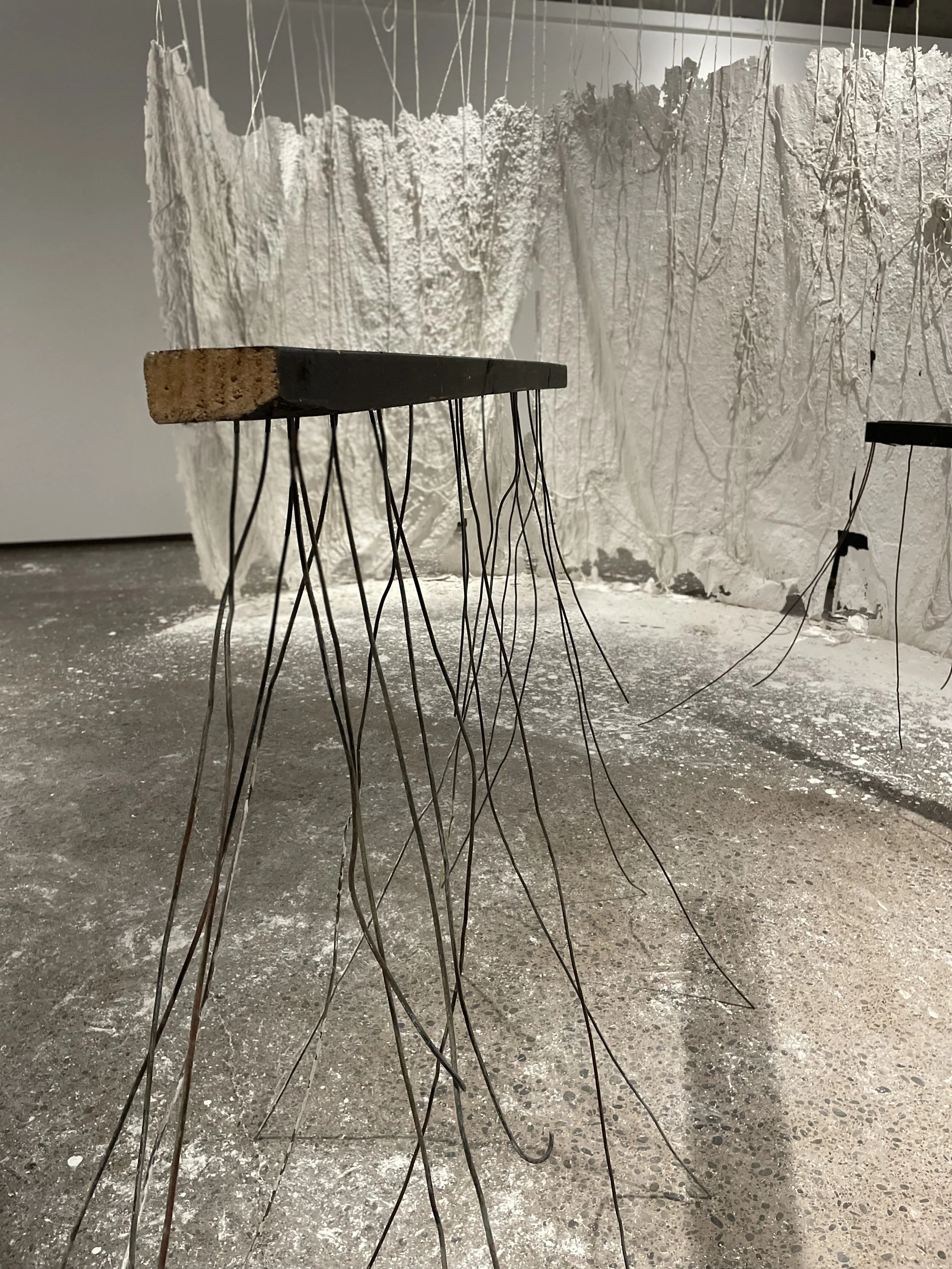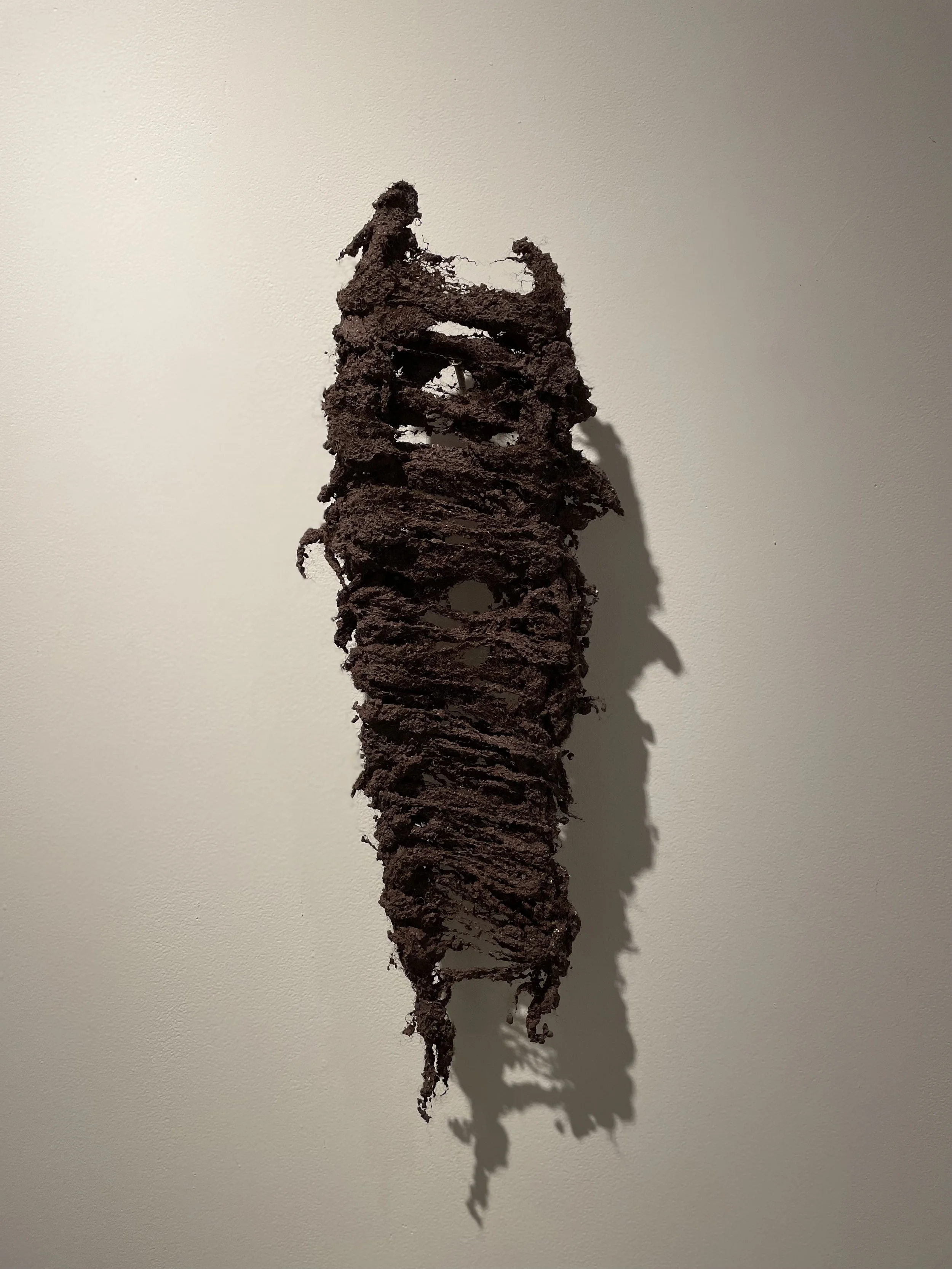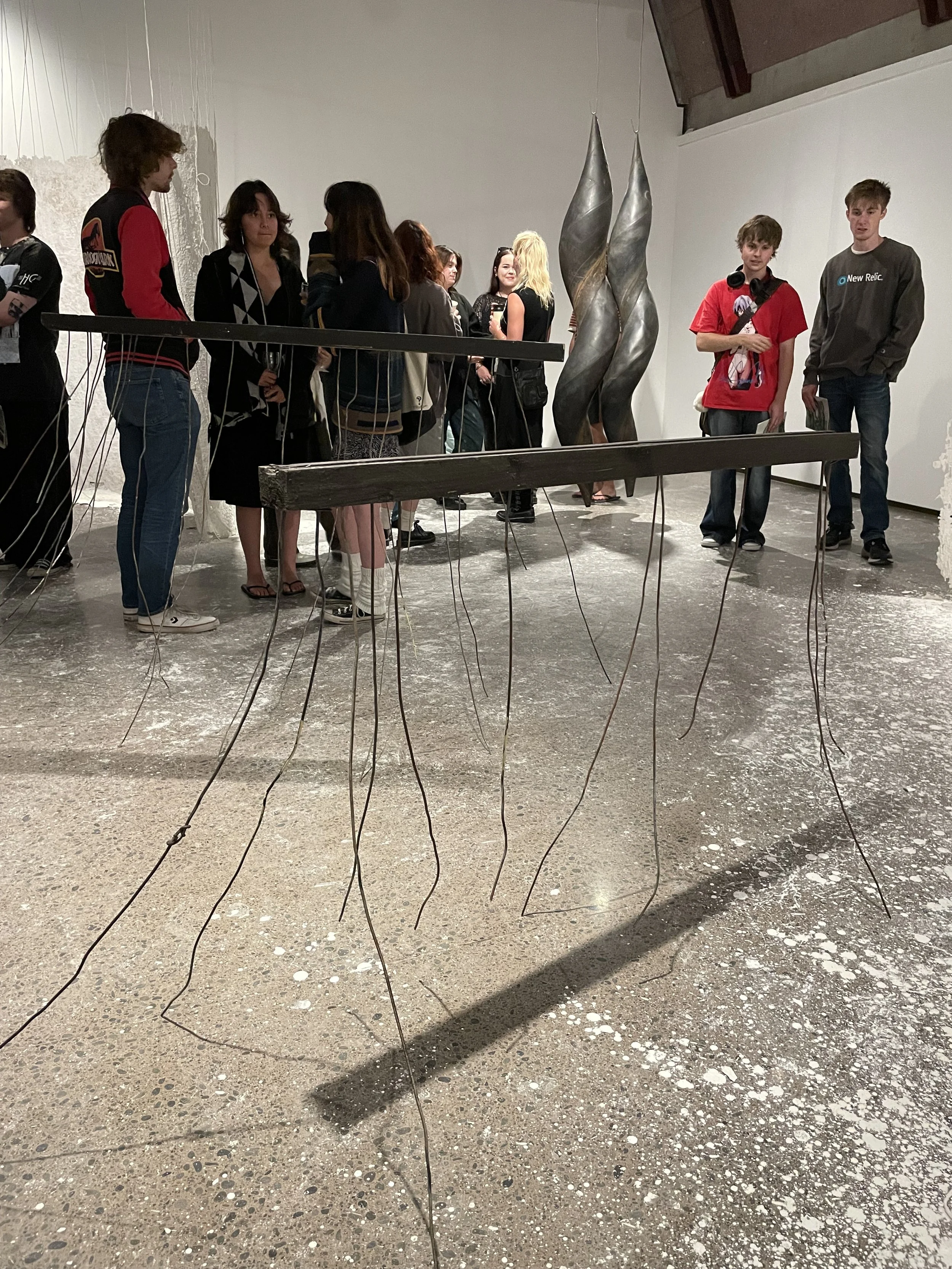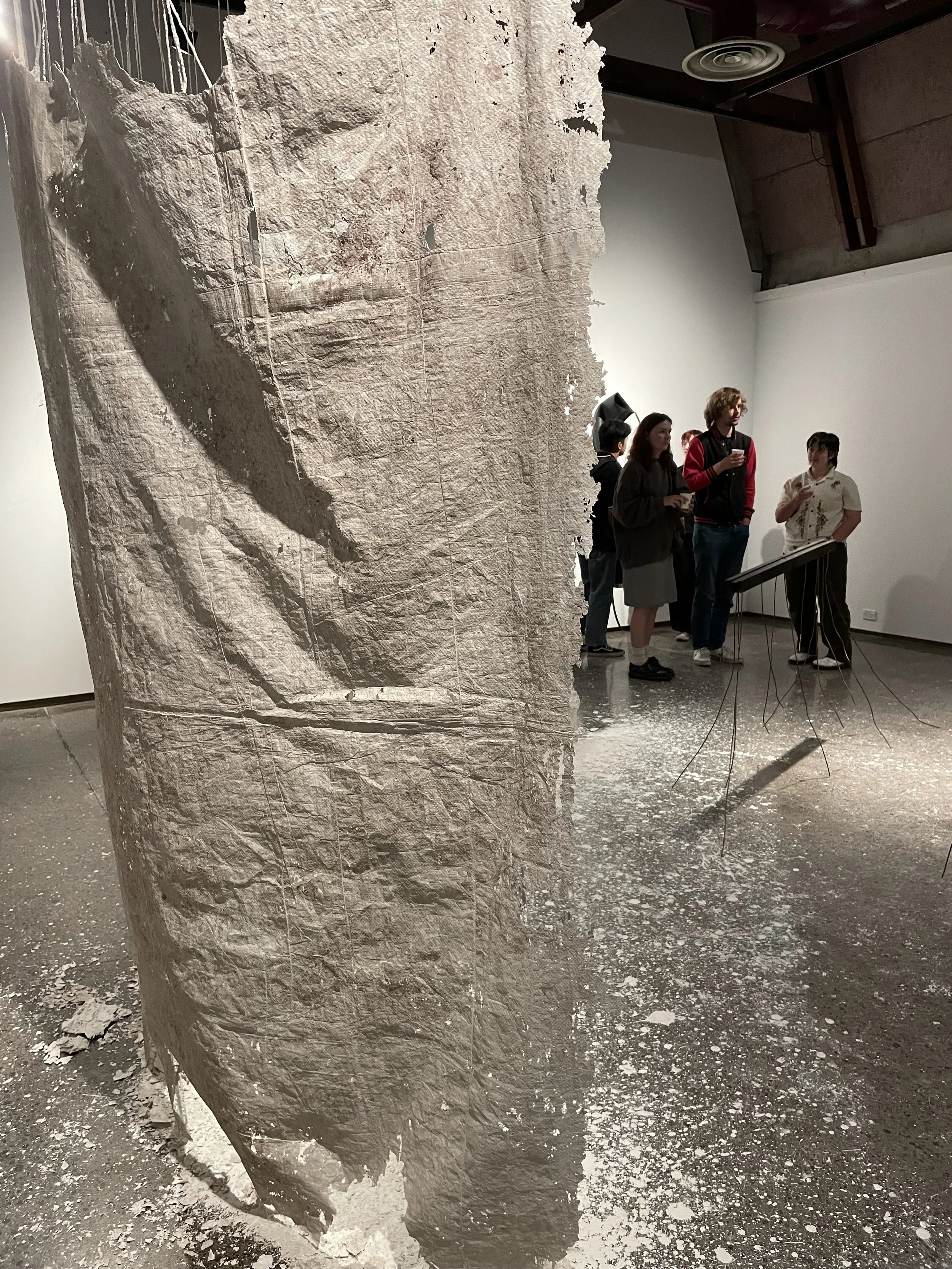Zoe Thompson-Moore
A Lump of Something Wound About
Zoe Thompson-Moore’s A Lump of Something Wound About, presents a playful, provisional collection of loose parts - material remainders from the emergent practices that ground her ongoing creative process. These embodied threads of thought wind and unwind around the core question of how practice is both nurtured and nurturing.
Zoe Thompson-Moore (Pākehā - Manx, Irish, English, Scottish) is an artist and cultural worker living in Te Awakairangi ki Tai Lower Hutt who graduated from Ilam School of Fine Arts in 2012. Her practice generates possibilities for transforming our relationships with each other, our work/doing, the more-than-human and ourselves.
Exhibition curated by Grace Ryder.
Sarah Rowlands / Wendy Clarke / John Osborne
Land | Memory | Fragility
An invitation to a collaborative exhibition showcasing the works of three postgraduate students and their individual responses to the environment where it intersects with human experience.
Each presents distinct environmental interpretations through diverse approaches to photography. The exhibition is a creative experiment to merge their unique, yet complementary perspectives of the whenua, showcasing how various aspects of the environment can be captured and conveyed through artistic practice, enhancing meaning and awareness.
The artists’ lived experience of the landscape is presented to allow viewers to reflect on the past, present (and future).
The intention is to encourage questions about the journey and interaction with the natural and constructed world, reflecting on land, memory, and fragility.
Amelia Barrett/ Miah Borlase/ Katie Griffiths
In the Space of Open Water
In the Space of Open Water is an exhibition that draws together works from the Graphic Design studio that have won the annual SELECT Award.
Curated by Graphic Design students; Amelia Barrett, Miah Borlase and Katie Griffiths; In the Space of Open Water brings together works by Harriette Herlund, Stella Sales, Issy van der Leden, Luke Shaw, Lee Richardson, Emma Kevern, the Blue Monday Collective, Thomas Barrar & Amy Hollands, aka ‘Barry/Holly, and Lucy Mackie. This selection of work documents a diverse range of speculative and poetic graphic design works and practices; spanning the fields of print, sound, video, and installation.
This exhibition seeks to explore what it means for a ‘graphic design’ studio to operate within the context of an ‘art’ school. Design studios and departments were pulled out of all other art schools around New Zealand in the 1990s and set up as stand-alone design degrees, all of which are now led by ‘industry advisory boards’. The Graphic Design studio at Ilam operates very differently to other institutions. Existing under the aegis of a ‘Bachelor of Fine Arts’, the design program here leans into more critical, speculative, and poetic approaches to graphic design practice.
It is interesting to us that Graph Design students regularly win Select awards. These awards are chosen by a visiting curator from an art gallery, and so this cross-over between ‘art’ and ‘design’ — different and distinct disciplines at other institutions — seems rich with potential here at Ilam. This is an anomaly that we wish to consider, discuss and share; through the bringing together of all previous graphic design select winners in this exhibition.
Kirsty de Heer/ Frankie Hickman/ Malia McLellan/ Paige Tonkin/ Jet Tyler/ Tessa Wyse
Ouroboros
Cycles are rhythms that govern our universe, encompassing everything from the orbits of planets to the pulse of human life. They signify more than mere repetition; they embody transformation and the interconnected web of existence. Cycles illustrate the beauty of repetition and the inevitability of change, offering a framework through which we can understand growth, decay, and renewal. In nature, cycles like the hydrologic cycle or the metamorphosis of butterflies show the miraculous transformations that occur through time. In human experience, cycles manifest in the tides of emotions, the evolution of ideas, and the historical rise and fall of civilizations. They remind us that with every end comes a new beginning, and with every loss, a potential for renewal. The ancient symbol of the snake that eats itself, or Ouroboros, represents this idea; a never-ending cycle of life, death, and rebirth that is reflected across time.
Ouroboros is a collaboration between the fourth-year photography students who have brought individual practices together to explore and expand understandings of the cyclical nature of our universe.
Toni Cuthill, Sam Neal
Today as I hung out the wash I saw the world flicker
Image creation occurs at such a rapid pace that images have incidentally become a primary means of mediating interaction and communication with others. Whether we offer a true reflection or a composed version of events, both can evoke a sense of familiarity within the viewer. However, the potential for fabrication casts a shadow of uncertainty over the notion that an image can only be a representation of something ‘real’.
Through both moving and still images, Today as I hung out the wash I saw the world flicker works to create a space for consideration of this shadow, this blurred landscape, observing the way it is shifting the modes to which we interact with others, and the influence it has over our perception of our immediate environment.
Marie Lawrence, Phoebe Rouse, Lily Rose Claypole, Cherry Mitchell, Fionn Walker
Being Is An Empty Fiction
Being is an Empty Fiction aims to question the nature of existence. In suggesting that what we perceive as real or concrete may ultimately be insubstantial or illusory, this exhibition aims to challenge the conventional understanding of reality. Rooted in the philosophical traditions of existentialism, nihilism, and postmodernism, the works aim to destabilize the viewer’s sense of certainty about existence by encouraging a deeper contemplation of what it means to be.
Matthew Galloway & Mohammed Sleiman Labat
Empty Vessels & Dessert Strawberries
Empty Vessels and Desert Strawberries is a dialogue between Aotearoa New Zealand artist Matthew Galloway and Sahrawi Western Saharan artist Mohamed Sleiman Labat. The two, who have had an ongoing correspondence since meeting in 2016, present different perspectives on Aotearoa’s reliance on phosphate rock from Western Sahara. Phosphate is mineral rock used to make fertiliser, partly fuelling Aotearoa’s high-performing agricultural industry. However, the resource is controlled by Morocco’s violent occupation of the region, which has displaced the Sahrawi people from their land.
Galloway's work traces the movement of phosphate-carrying ships from Western Sahara to New Zealand, raising questions about the country's reliance on a resource tied to the displacement of the Sahrawi people. His installation incorporates 10 years of shipping data, suggesting a potential shift away from Western Saharan phosphate due to growing public scrutiny.
Meanwhile, Sleiman Labat's sound work, adapted from his film Desert Strawberries, fills the gallery with the voices of Sahrawi refugees. It juxtaposes memories of nomadic life before the Moroccan invasion with contemporary accounts of the "family gardens" now flourishing in the camps, a testament to the resilience and ingenuity of the Sahrawi people as they strive for greater food autonomy.
Empty Vessels was originally commissioned by Te Whare Toi o Heretaunga - Hastings Art Gallery, December 2023.
Natalie Guy & Sandra Bushby
BLUE FLEUR: Airy and Articulate
Bushby and Guy come together as two women artists with an admiration of each other’s work. Their interest in a joint project was spurred by a discussion of the sense of atmosphere they recognised in each other’s works and the realisation that they both draw upon literary sources for inspiration.
In Blue Fleur: Airy and Articulate, a second iteration exhibition which derives its title from the poem by Joanna Margaret Paul (1945-2003), Sandra Bushby and Natalie Guy respond to poetic language across boundaries of medium, opening the edges between the materiality of language, emergent painting processes, and stained glass as a vessel for sculptural translation.
Joanna Margaret Paul’s poetry collection Like Love Poems was chosen for its expressive symbolism of space and colour. The artists feel these qualities are physically manifested in Paul’s painted series Stations of the Cross (c. 1971), for St Mary, Star of the Sea Church in Port Chalmers. They recognise that Paul crosses boundaries in her use of materiality, as the fresco surface is juxtaposed with the translucency of the stained-glass windows in the chapel. Her dense, matte paintings which are spare in colour operate as a kind of window with its own sense of transparency, eliciting spiritual contemplation within the religious setting.
Celebrating 50 years of Art History
Bringing Art into the Lives of Everyone
Fifty years ago, in 1973, the first staff member was appointed to the newly established department of Art History at the University of Canterbury, and the department began teaching in 1974. Years later, long-time head of the School of Fine Arts Professor John Simpson recalled that one of his motivations for introducing art history as a subject in the School was ‘its role in bringing Art into the lives of everyone’. In the succeeding years the department has more than met this expectation.
This exhibition – ‘Bringing Art into the Lives of Everyone’ – matches works drawn from the University Art Collection with research by staff from the department, celebrating fifty years of Art History at UC.
Isabella Loudon
Eat Your Mind
What if an artist was given free rein to infiltrate a building, extending beyond their studio space to fill it with their own sculptural work? In December 2023 sculptor Isabella Loudon opened up the building she has been working in for the last two years, and has now taken over. This was a rare chance to see a site-specific multi-roomed installation before the building is demolished in 2024.
